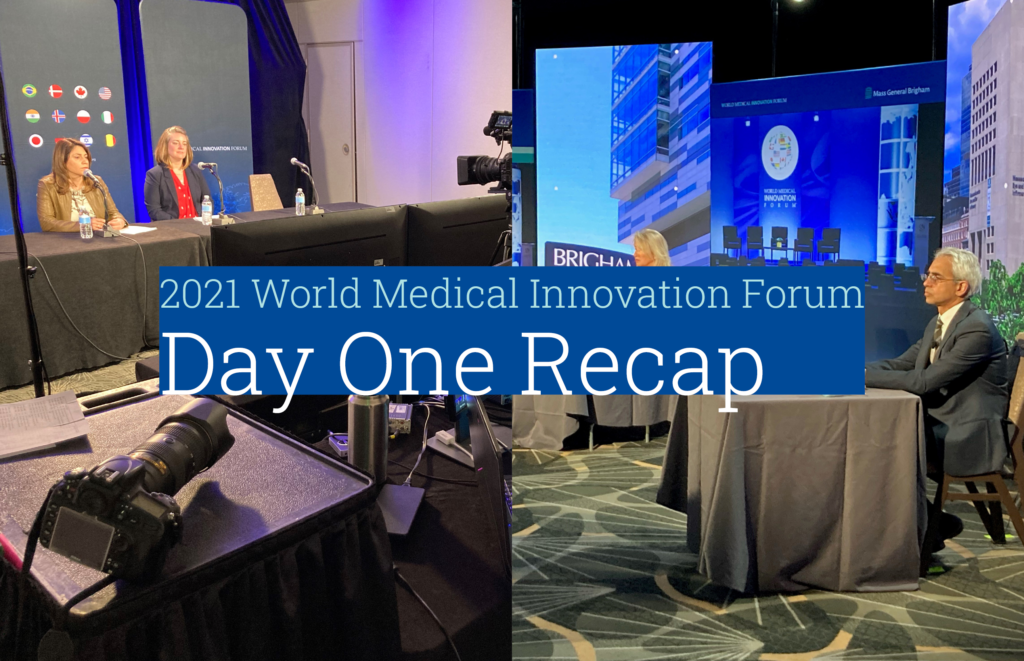WMIF MAIN SITE
2025 Event Site
The day began with discussions on gene therapy, with themes of safety, efficacy, technological limitations and economies of scale. The impact of gene and cell therapy on patients was showcased as panelists shared how GCT is at an inflection point for getting therapies to patients that could offer treatment and potentially cures for patients facing life-threatening diseases. “The potential for GCT therapies is mind-boggling… patients with ultra-rare diseases ask, ‘When will it be my turn?’” explained Sue Slaugenhaupt, PhD, Scientific Director, Mass General Research Institute. Given the unique nature of genetic disorders, there’s not going to be a one-size-fits-all approach to treatment, said Meredith Schultz, MD, Executive Medical Director and Lead TME for Novartis Gene Therapies. “Each application, each patient group, each disease is going to have its own nuances.”
While early successes have been promising, target delivery continues to be a challenge.
Most gene therapy trials are using first generation adeno-associated viruses (AAVs), noted Mathew Pletcher, PhD, SVP and head of gene therapy research and technical operations for Astellas.
“We haven’t perfectly optimized that system, which leads to a deficit in reaching our target tissue at our optimal dose range,” Pletcher said. “If we can better engineer our capsids and viruses to get our transgene into cells to make a difference—this means dosages are lower, increased safety, lower pressure on manufacturing capacity, and lower costs.”
Safety is another concern. Adverse events in gene therapy have been poorly predicted in animal models, noted Katherine High, MD, president of therapeutics for AskBio and co-founder of Spark Therapeutics. “It’s important to be very attentive to any safety signal, anything you find surprising. In gene therapy you may see a safety signal, (another) safety signal and then fall off a cliff.”
“In some cases, it’s quite likely these adverse events are not manufacturing or process specific but patient type specific,” said Rick Modi, CEO of Affinia Therapeutics. “But with the right selection of patient communities I believe the benefit vs. risk is quite profound.”
The high cost of gene therapy treatments is another potential roadblock, panelists acknowledged.
“There is a real tension between the types of therapies we are introducing, and the way health systems are set up to reimburse,” said Dave Lennon, PhD, president, Novartis Gene Therapies.
Lennon recommends engaging with payers early in the development process to being reimbursement conversations. When you look at the total cost of care for patients with these diseases—in terms of lifetime treatment costs and lost productivity—the value proposition quickly becomes clear, Lennon said.
The afternoon session focused on two highly promising—but still limited—therapeutic avenues for cancer.
Oncolytic virus therapy—using viruses to infect and kill cancer cells—has proven to be an safe treatment strategy, but progress in therapeutic development has been slow.
In clinical trials treatments have only been successful when the viruses are injected directly into the lesion (in the case of melanoma) or via direct injection into a solid tumor. Researchers have yet to find an effective way to make the treatments work via systemic injection.
Challenges and opportunities in CAR-T therapy was next.
Panelists agreed there is still significant interest in CAR-T, from expanding treatments to more types of blood cancers to streamlining the production process to lower costs and improve accessibility.
“It’s not easy, or for the faint of heart, or for people who have small money in the bank,” said Christi Shaw, CEO of Kite. “It’s time and cost intensive, but it is one of the only areas of oncology where we can talk about a cure.”
When it comes to targeting solid tumors with CAR-T cells, two key challenges are identifying antigens specific to the tumors (so the CAR-T do not attack healthy cells in the body) and learning how CAR-T cells function in the tumor microenvironment—and what strategies cancer cells might use to evade them.
“We are still early in understanding how to tackle solid tumors and it is going to take a lot of innovation, a lot of creativity, and a lot of investment to figure out how we can do this,” acknowledged Barbra Sasu, PhD, CSO of Allogene. “But patients are waiting.”
On Thursday, the Forum will include discussions on the growth of GCT in China, a focus on large incidence and rare diseases and multiple sessions on gene editing. The day will also include several one-on-one fireside chats with health care leaders, the Innovation Discovery Grant award announcement and First Look sessions with leading Mass General Brigham GCT investigators. VIP/Premium Access and Mass General Brigham attendees have exclusive access to Poster Sessions, networking and on-demand viewing through June 22.